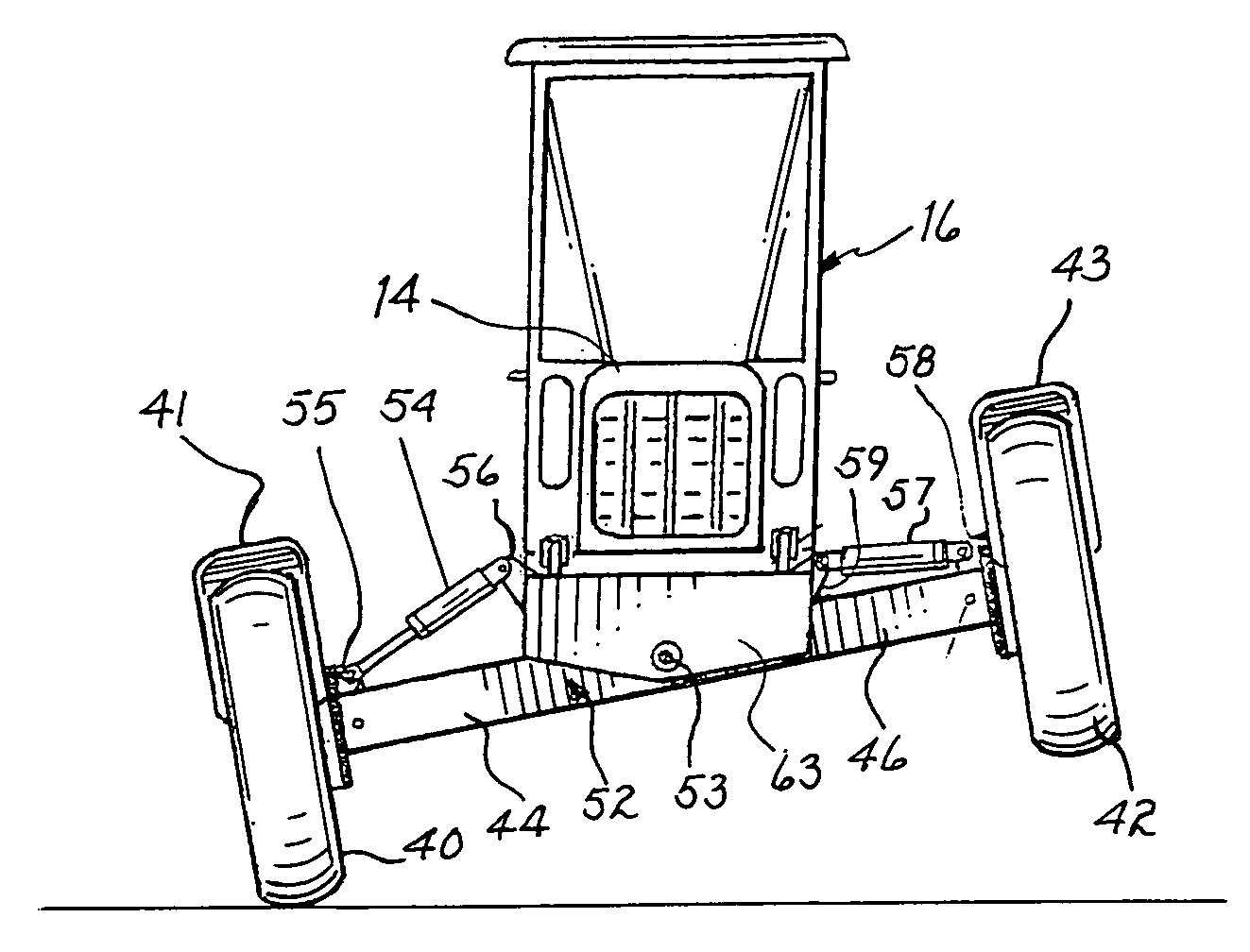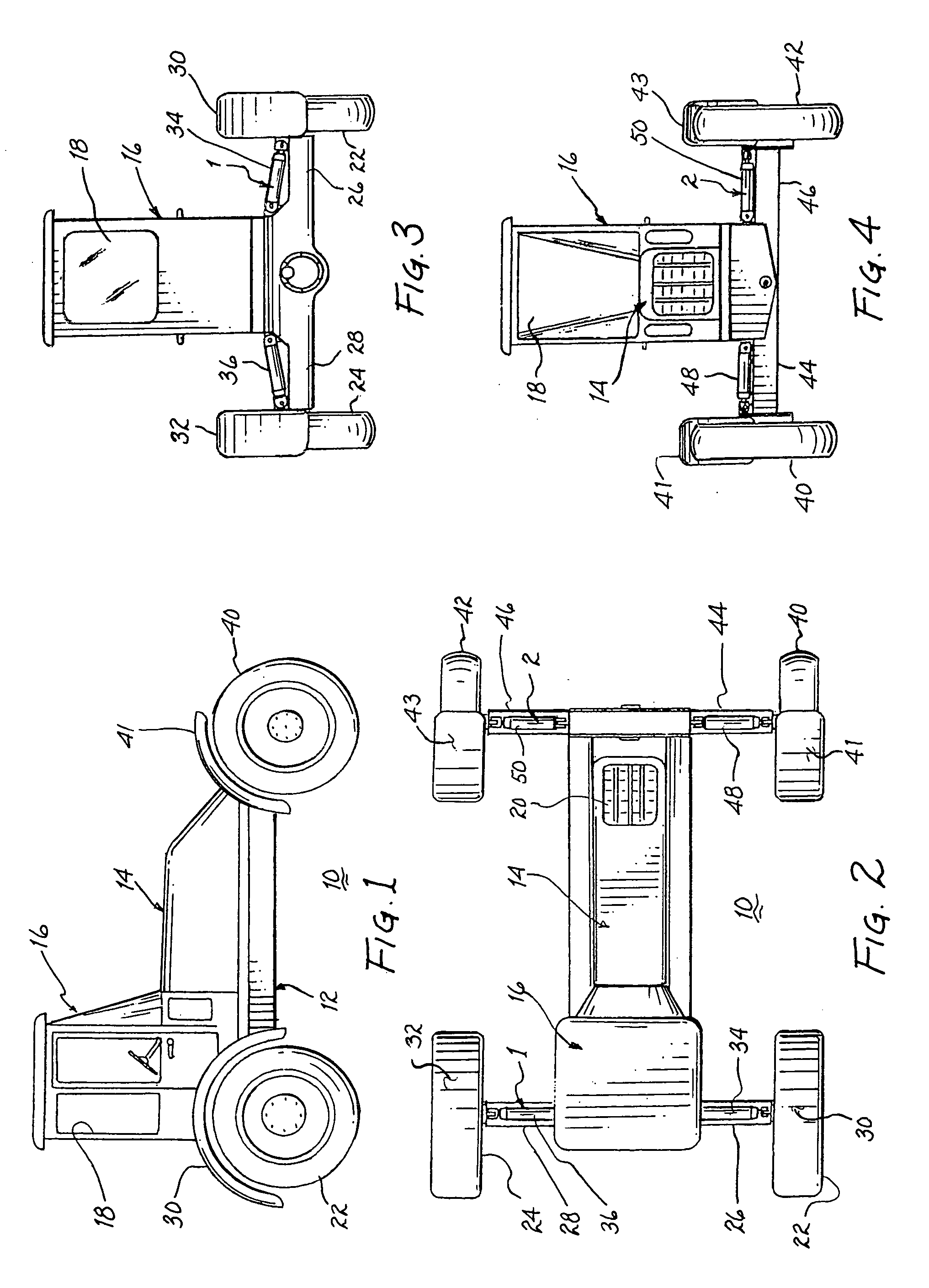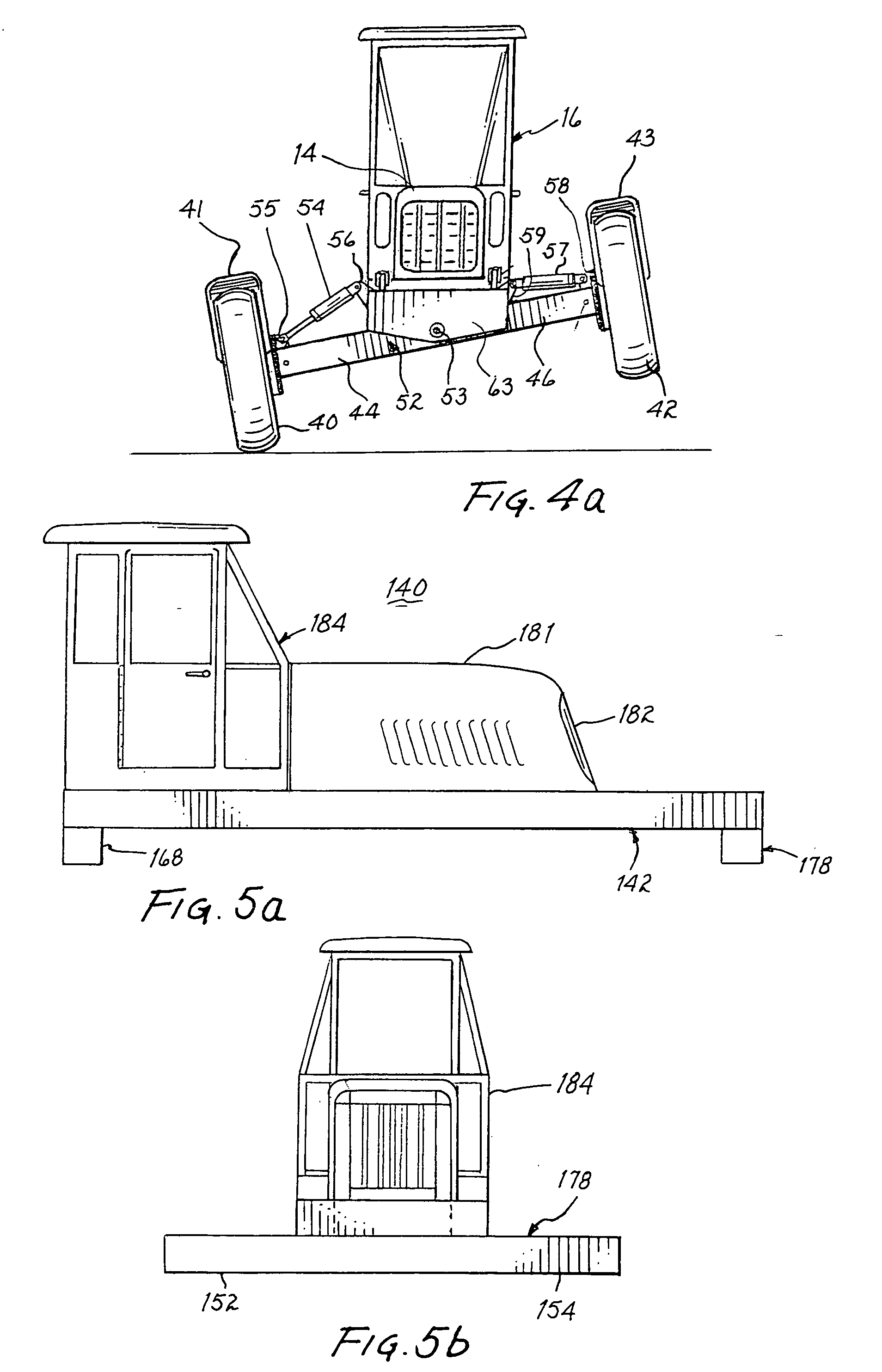Multi-configurable tractor
a tractor and multi-configurable technology, applied in the field oftractors, can solve the problems of requiring relatively expensive implements and equipments, and reducing the service life of the tractor, so as to achieve the effect of improving the service life, reducing the cost of equipment, and improving the service li
- Summary
- Abstract
- Description
- Claims
- Application Information
AI Technical Summary
Benefits of technology
Problems solved by technology
Method used
Image
Examples
Embodiment Construction
[0056] Referring to FIGS. 1, 2, 3 and 4 there is shown an agricultural tractor 10 embodying the present invention. The chassis of the tractor is formed of a tubular steel frame 12 upon which are mounted the conventional motor, transmission, steering mechanism and various ancillary components. A hood 14 shields the motor and its various components. A cab 16 encloses the operator and includes a plurality of windows 18 to provide visibility forward, backward and to the sides. Hood 14 may include a grill 20 or the like to provide cooling air to the motor within the hood. Rear wheels 22, 24 are supported by respective telescoping axles enclosed within telescoping steel tubes 26, 28, respectively. Fenders 30, 32 may be mounted above the rear wheels to prevent splatter of mud and the like. Extension and contraction of telescoping tubes within tubes 26, 28 is controlled by hydraulic rams 34, 36. Front wheels 40, 42 are pivotally mounted and coupled with a steering mechanism, as will be desc...
PUM
 Login to View More
Login to View More Abstract
Description
Claims
Application Information
 Login to View More
Login to View More - R&D
- Intellectual Property
- Life Sciences
- Materials
- Tech Scout
- Unparalleled Data Quality
- Higher Quality Content
- 60% Fewer Hallucinations
Browse by: Latest US Patents, China's latest patents, Technical Efficacy Thesaurus, Application Domain, Technology Topic, Popular Technical Reports.
© 2025 PatSnap. All rights reserved.Legal|Privacy policy|Modern Slavery Act Transparency Statement|Sitemap|About US| Contact US: help@patsnap.com



